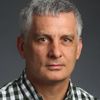Seattle Mayor Ed Murray announced his comprehensive transit plan but said it’s time to stop trying to make every street work for every mode.
Seattle Mayor Ed Murray wants to spend up to $200 million a year more for transit, safety, freight, bikeways, sidewalks and road maintenance.
Perhaps more significant is a philosophical change he announced Monday in Ballard: that the city would quit trying to shoehorn every mode of travel onto every street.
The mayor’s 10-year program, called Move Seattle, would probably require tax increases.
In a few weeks, he will unveil his request for a property-tax levy this fall, to replace the expiring nine-year levy known as Bridging the Gap, which will collect $43.7 million this year.
Most Read Local Stories
Most of the 24 big projects in Move Seattle were previously made public in city budgets, plans, neighborhood forums or news coverage. The Murray administration aspires to mold these into a coherent network.
“We have not kept pace with our exploding population, and we have not kept pace with how people want to move around in this city,” he said.
Projects include a South Lander Street overpass to carry trucks and commuters over the Sodo train tracks, costing as much as $200 million; a makeover of Roosevelt Way that adds electric trolley-bus wires and separated bicycle lanes for $34 million; and a safety project on Rainier Avenue South to provide $23 million in bus stops, sidewalks and fresh pavement.
In all, the city seeks new money totaling $1.3 billion, said Hannah McIntosh, a Seattle Department of Transportation (SDOT) strategic adviser.
Figures vary each year between $100 million and $200 million, and include money not only from a 2015 city levy but outside grants, such as $75 million the city seeks from Uncle Sam to fund half of a First Avenue streetcar line.
Shifting gears
Seattle was among the first U.S. cities to adopt a “complete streets” ordinance in 2007, declaring every road project would provide all kinds of mobility, not just for cars.
But in doing so, the SDOT issued some cluttered street layouts that satisfy hardly anybody — like striped bicycle lanes between moving traffic and parked cars.
“As we redesign and re-engineer these corridors, they won’t be the same, there won’t be one solution for everybody,” Murray said. “The goal will be to increase capacity, the ability to move people and goods.
“Some will include new bus-rapid-transit lanes to serve commuters. Some will emphasize safer, smoother movement of heavy freight in our industrial areas. Not all modes will operate in one street. Transit and cars may move together, while bikes and pedestrians may use other lanes, other streets that are protected in neighborhoods, on greenways, for example.”
The recently rebuilt Broadway is a goulash of separated bicycle lanes, driveways, left- and right-turn car lanes, driveways, parallel-parking spots and streetcar tracks running in the general traffic lanes.
“I’m not sure that if it had happened under my watch, we would have put all those things in one place,” said Murray, a longtime Capitol Hill resident and former state legislator. In hindsight, the parallel 12th Avenue might have been designed as the haven for bicycling, he said. Some scenarios even favored placing the rails on 12th.
Nonetheless, both Murray and SDOT director Scott Kubly say they’re not inclined to tear up brand-new facilities. Streetcar service is expected to begin this summer.
Planning speedup
Murray’s speech, next to the Ballard campus of Swedish Medical Center, included a promise to negotiate and plan projects faster.
An example of the opposite is the city’s failure, for a dozen years, to deliver the $16 million missing bike-trail link from the Ballard Locks to the Ballard Bridge. It is one of Move Seattle’s 24 big projects.
Murray pointed to a similar challenge along western Lake Union, where the city is working on final design for a bikeway that sacrifices fewer than one-fifth of city-owned parking-lot spaces that businesses use. “We were able to get together and think of a way to find a solution that works for everyone,” he said.
Eugene Wasserman, president of the North Seattle Industrial Association, said talks about how to finish the missing link are again under way, and he’s glad to hear Murray won’t wait until a full environmental review is done.
In general, industries oppose a full trail that past mayors and the Cascade Bicycle Club supported next to gritty Shilsole Avenue Northwest, instead favoring separated cycle tracks next to pubs and small merchants, following Northwest Market Street and Leary Way Northwest.
